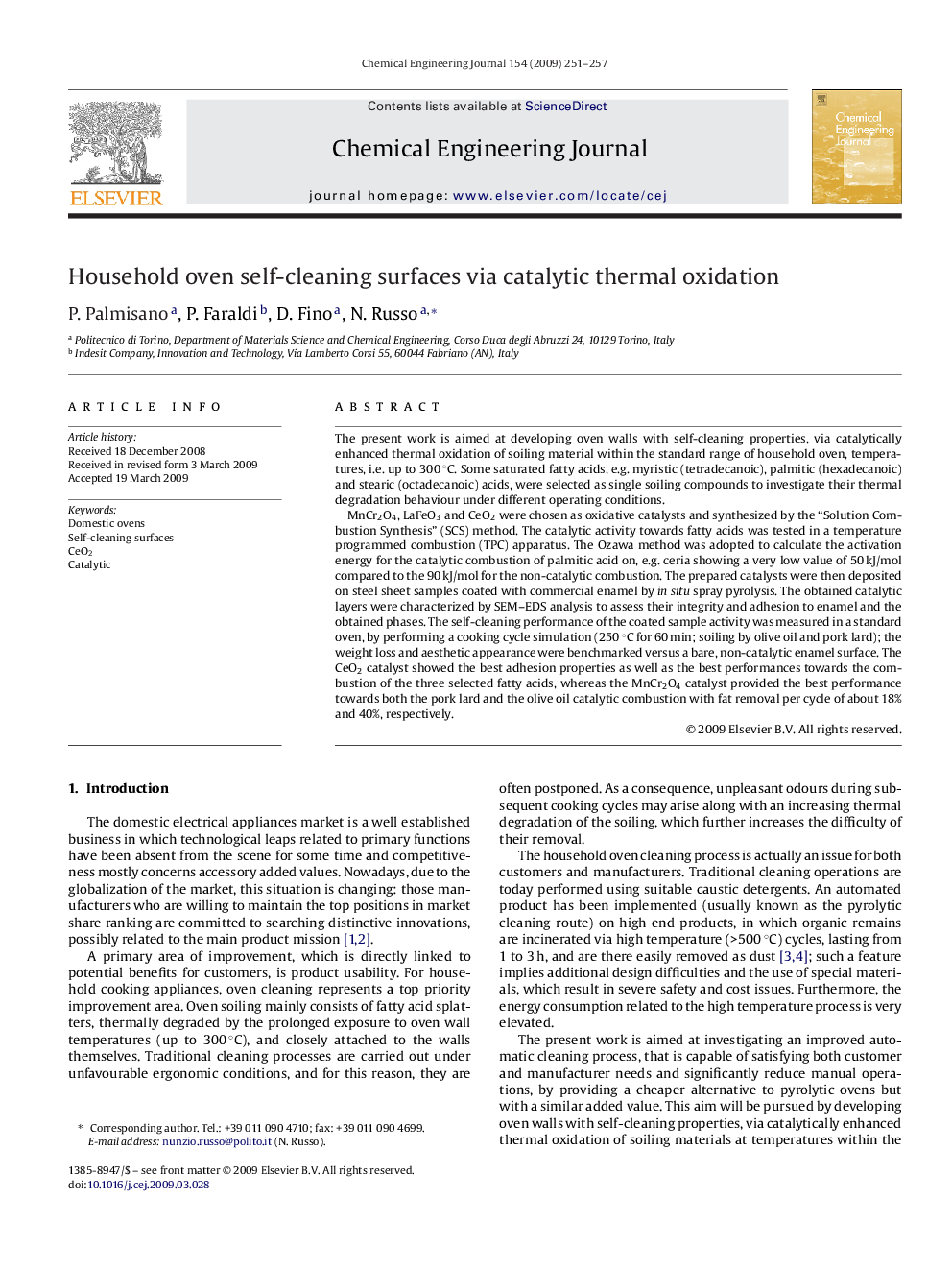| کد مقاله | کد نشریه | سال انتشار | مقاله انگلیسی | نسخه تمام متن |
|---|---|---|---|---|
| 153545 | 456531 | 2009 | 7 صفحه PDF | دانلود رایگان |

The present work is aimed at developing oven walls with self-cleaning properties, via catalytically enhanced thermal oxidation of soiling material within the standard range of household oven, temperatures, i.e. up to 300 °C. Some saturated fatty acids, e.g. myristic (tetradecanoic), palmitic (hexadecanoic) and stearic (octadecanoic) acids, were selected as single soiling compounds to investigate their thermal degradation behaviour under different operating conditions.MnCr2O4, LaFeO3 and CeO2 were chosen as oxidative catalysts and synthesized by the “Solution Combustion Synthesis” (SCS) method. The catalytic activity towards fatty acids was tested in a temperature programmed combustion (TPC) apparatus. The Ozawa method was adopted to calculate the activation energy for the catalytic combustion of palmitic acid on, e.g. ceria showing a very low value of 50 kJ/mol compared to the 90 kJ/mol for the non-catalytic combustion. The prepared catalysts were then deposited on steel sheet samples coated with commercial enamel by in situ spray pyrolysis. The obtained catalytic layers were characterized by SEM–EDS analysis to assess their integrity and adhesion to enamel and the obtained phases. The self-cleaning performance of the coated sample activity was measured in a standard oven, by performing a cooking cycle simulation (250 °C for 60 min; soiling by olive oil and pork lard); the weight loss and aesthetic appearance were benchmarked versus a bare, non-catalytic enamel surface. The CeO2 catalyst showed the best adhesion properties as well as the best performances towards the combustion of the three selected fatty acids, whereas the MnCr2O4 catalyst provided the best performance towards both the pork lard and the olive oil catalytic combustion with fat removal per cycle of about 18% and 40%, respectively.
Journal: Chemical Engineering Journal - Volume 154, Issues 1–3, 15 November 2009, Pages 251–257